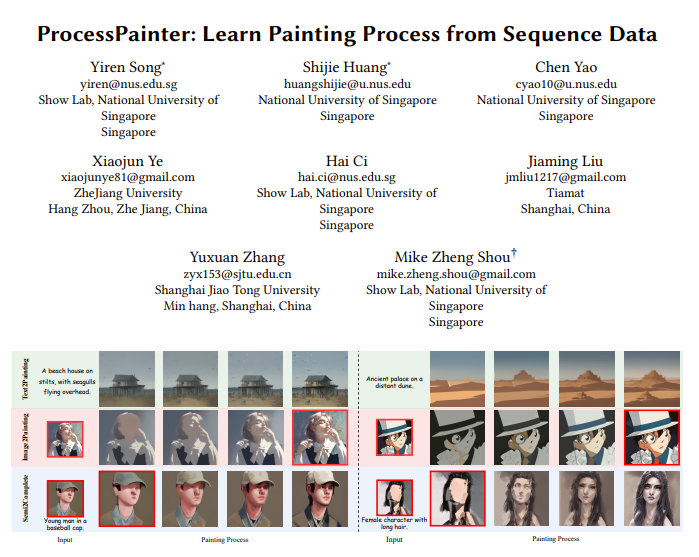Artificial intelligence is changing our world at an unprecedented rate, and its impact has already touched the field of art. A research team from the National University of Singapore has developed an AI painting technology called ProcessPainter, which can simulate the creative process of human painters, even generate paintings based on text descriptions, and complete semi-finished paintings. This technological breakthrough not only brings new possibilities to art education and creation, but also provides a new perspective for us to understand the integration of AI and art. The emergence of ProcessPainter marks another major progress in the application of AI in the art field. How it will change the art creation and education model is worthy of our in-depth discussion.
Driven by the wave of digitalization, artificial intelligence (AI) is gradually penetrating into every corner of human life, and now it has set off a revolution in the field of art. A research team from the National University of Singapore has developed an AI technology called ProcessPainter, which is able to learn and simulate the painting process of human painters, and even generate paintings from text descriptions to complete semi-finished paintings. This technological breakthrough not only provides a new perspective for art education and research, but also brings infinite possibilities to artistic creation.
The traditional painting process is full of personalized brushstrokes and styles, and ProcessPainter was born to capture and reproduce this process. It is first pre-trained on synthetic data, and then fine-tuned on real painters' painting sequences, learning how to build a painting step by step from abstract to concrete, and from macro to detail.

What's even more amazing is that ProcessPainter can accept input from any frame to achieve precise control of the painting process. This means that whether you give AI a semi-finished product or a finished product, it can continue to draw it, or reverse-engineer it to restore every step of the painting.
The researchers conducted a series of tests on ProcessPainter. Experimental results show that ProcessPainter has demonstrated excellent capabilities whether it is generating a painting process from a text description, converting ready-made artworks into painting steps, or even completing semi-finished paintings. The painting process it generates is not only highly similar to the creative process of human painters, but also shows a high degree of consistency in detail processing and overall style.
ProcessPainter has a wide range of application prospects. In the field of art education, it can be used as a teaching tool, allowing students to intuitively learn the master's painting skills and understand the deep logic of artistic creation. In the field of artistic creation, it provides artists with a new creative partner, helping them achieve bolder creativity and more sophisticated work production.
Although ProcessPainter still needs to be improved in its ability to handle higher resolutions or longer sequences, and there are certain challenges in obtaining the painting process data of human painters, it has already shown us the infinite possibilities of combining AI and art. With the continuous development of technology, future AI will be able to better understand and simulate human creativity, and work with artists to create more amazing works.
ProcessPainter’s research not only opens a window for us to understand the application of AI in the art field, but also provides us with a brand-new artistic creation and education tool. The development of this technology will undoubtedly bring about a profound change in the art world.
Paper address: https://arxiv.org/pdf/2406.06062
The emergence of ProcessPainter heralds the deep integration of artificial intelligence and artistic creation. Although there are still some technical challenges, its development prospects are immeasurable. In the future, it may become an effective assistant for artists, promote the further development of artistic creation, and also bring revolutionary changes to art education.